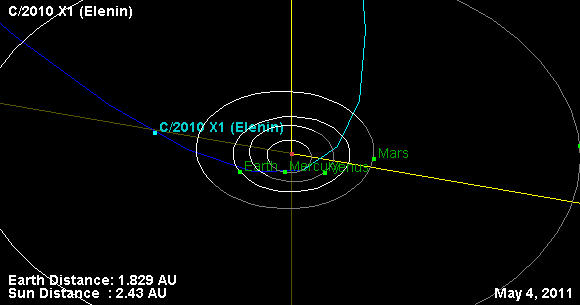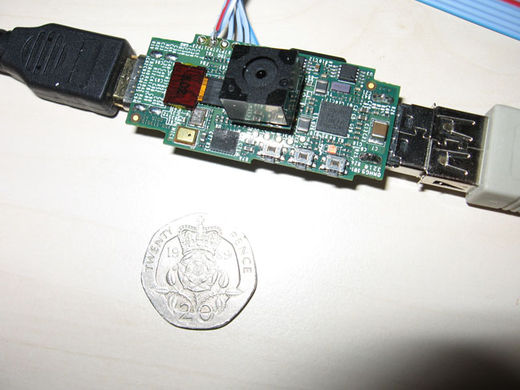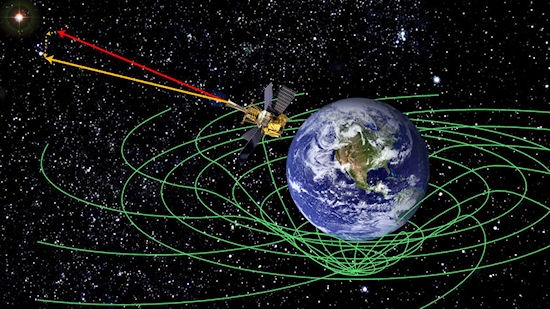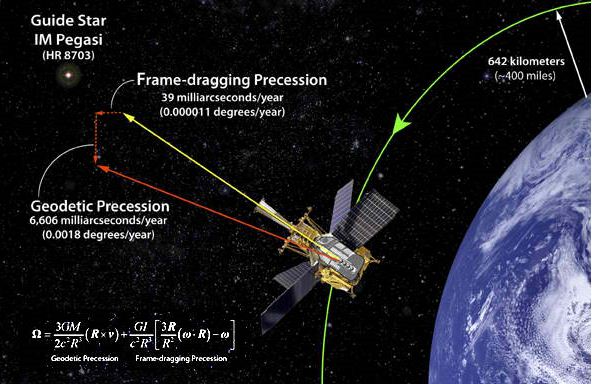
© NASA/JPL-CaltechTrajectory of comet Elenin.
You may have heard the news: Comet Elenin is coming to the inner-solar system this fall. Comet Elenin (also known by its astronomical name C/2010 X1), was first detected on Dec. 10, 2010 by Leonid Elenin, an observer in Lyubertsy, Russia, who made the discovery "remotely" using the ISON-NM observatory near Mayhill, New Mexico. At the time of the discovery, the comet was about 647 million kilometers (401 million miles) from Earth. Over the past four-and-a-half months, the comet has - as comets do - closed the distance to Earth's vicinity as it makes its way closer to perihelion (its closest point to the sun). As of May 4, Elenin's distance is about 274 million kilometers (170 million miles).
"That is what happens with these long-period comets that come in from way outside our planetary system," said Don Yeomans of NASA's Near-Earth Object Program Office at NASA's Jet Propulsion Laboratory in Pasadena, Calif. "They make these long, majestic, speedy arcs through our solar system, and sometimes they put on a great show. But not Elenin. Right now that comet looks kind of wimpy."
How does a NASA scientist define cometary wimpiness?
"We're talking about how a comet looks as it safely flies past us," said Yeomans. "Some cometary visitors arriving from beyond the planetary region - like Hale-Bopp in 1997 -- have really lit up the night sky where you can see them easily with the naked eye as they safely transit the inner-solar system. But Elenin is trending toward the other end of the spectrum. You'll probably need a good pair of binoculars, clear skies, and a dark, secluded location to see it even on its brightest night."



Comment: Craig Brown: "The U[S]A[']S bar has been raised. Now I'm eager to see how high that bar will go."
One could argue the above, that word for word, the opposite can be said.